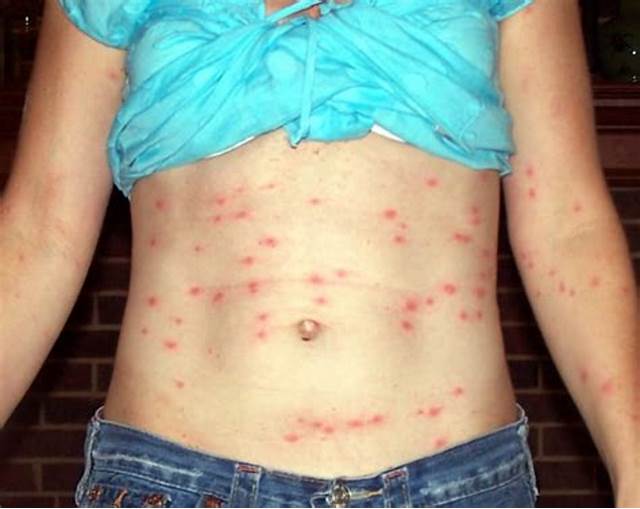
Mila, a 16-year-old student, presents with acute diplopia. She has been unwell for five days with fever, headache, nausea and vomiting.
She had a blanching red blotchy rash on her abdomen for a few days which has now resolved.
Mila is usually well. She returned from a camping holiday in the Top End with her parents and younger sister a week ago.
The rest of the family are well, and they took precautions to prevent insect bites, but Mila did sustain one nasty bite that still hasn’t healed.
On examination she is febrile at 39°C and mildly dehydrated. There is a black scab at the bite site.
The only other significant finding on systems examination is pictured below.
What is the most likely diagnosis?
Correct!
This is a left abducens nerve palsy secondary to scrub typhus caused by infection with the rickettsial bacterium Orientia tsutsugamushi, transmitted via bites from infected larval mites (chiggers).
In Australia, the most important rickettsial infections are caused by Orientia tsutsugamushi (which causes scrub typhus) and Rickettsia australis (which causes Queensland tick typhus).
The incidence of both infections is increasing, with rickettsial infections responsible for 6% of undifferentiated febrile illnesses in one inpatient series from tropical Australia, conducted in 2020.
Chiggers live in grassland at the edge of dense monsoon forests or forested creeks. They are small (0.2-0.4mm) and typical hosts are marsupials and rodents.
In the Top End, people at greatest risk are bushwalkers, off-road tourists, Indigenous people pursuing traditional lifestyles, military personnel on bush exercises, park rangers and people clearing virgin land in high risk areas.
Scrub typhus often causes a mild, self-limiting illness, but can lead to multi-organ failure if untreated.
The incubation period ranges from 6-21 days. An associated acute febrile illness is common, typically with non-specific features such as headache, myalgia and lymphadenopathy. An eschar/s is often present at the site of the bite/s, though may be difficult to identify, particularly if located in intertriginous areas.
Around half of patients will have an associated non-pruritic macular or maculopapular rash. Gastrointestinal features are present in up to 25% of cases, typically nausea, vomiting or diarrhoea.
Cerebral involvement may result in meningoencephalitis, seizures, and strokes, especially in children and older adults.
Isolated cranial nerve involvement in scrub typhus is rare and thought to be caused by micro-infarction of nerves due to vasculitis and traction on vessels due to ventricular dilation.
Acute sensorineural hearing loss and severe otalgia due to eighth nerve involvement is the most frequent cranial nerve manifestation. Cases of isolated third nerve palsy and sixth nerve palsy are rare.
Diagnosis is usually based on serology. Polymerase chain reaction (PCR) swab of eschar material or biopsy samples can be used to identify the species.
The recommended treatment is doxycycline 100mg orally (child: 2.2mg/kg up to 100mg) twice daily for seven days, or IV for severe cases.
Azithromycin is an alternative agent, though doxycycline is preferred, including in children of all ages, as the more effective option.
In this case, Mila is admitted via ED. MRI brain and CSF assessment are unremarkable. She has a mild leukopenia and thrombocytopenia on pathology.
Serology confirms high titres of Orientia tsutsugamushi antibody and PCR of the eschar is also positive.
Mila is treated with oral doxycycline and within a week has significant clinical improvement and near complete recovery of lateral rectus function.
